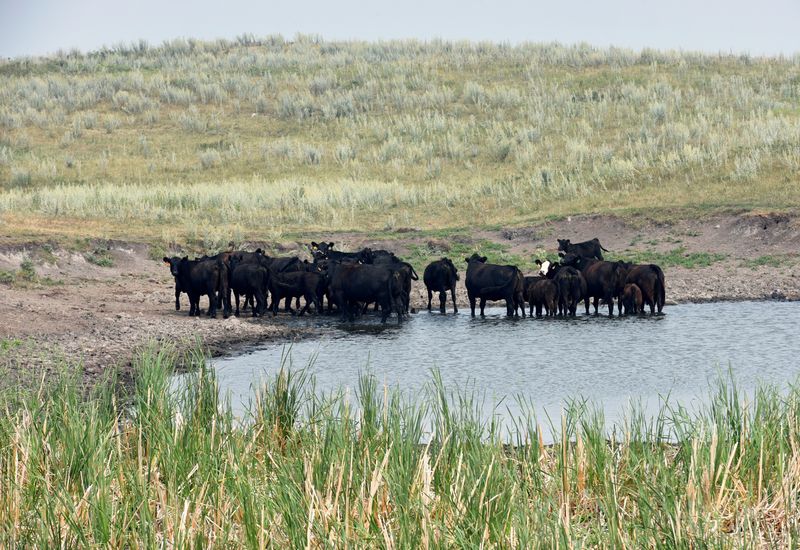By Julie Ingwersen and Heather Schlitz
CHICAGO (Reuters) - The return of drought in U.S. cattle-producing areas is delaying ranchers' plans to expand production after the nation's herd shrank to its smallest level in seven decades, farmers and analysts said.
Tight cattle supplies are squeezing meatpackers, including Tyson Foods (NYSE:TSN), which reports quarterly earnings on Tuesday, and consumers facing high beef prices.
Meat producers had hoped rains would encourage ranchers to begin rebuilding herds in 2024 after years of drought burned up pastures and forced farmers to send more cows to slaughter.
Dryness has instead worsened over the past two months in another blow to processors that must pay up to buy limited cattle supplies.
Across the United States, 62% of cattle were in areas suffering from drought at the end of October, the most since December 2022, according to the U.S. Drought Monitor.
More than half the herd remained in drought zones last week after rains hit the Plains, up from less than 20% for most of the year and just 8% in June.
In Nebraska, the nation's second-biggest cattle-producing state, rancher Chad Engle said dryness has reduced sprawling pastures to yellow, brittle stubble and unleashed plumes of dust into corrals that make his cattle cough and wheeze.
"We had plans to expand our herd but we cannot do that in the teeth of a drought," said Engle, adding that he culled 10% more of his herd than normal last year.
Ranchers in Oklahoma, the fifth-largest U.S. cattle producer, often sow wheat in September but drought delayed plantings, depriving ranchers of weeks of grazing.
"Drought is the reason why the herd size has come down so much and it's the only thing holding back ranchers from expanding the herd," Morningstar equity strategist Kristoffer Inton said.
The lack of pasture and high cattle prices have prompted ranchers to send female cows, or heifers, and young calves to feedlots sooner than normal to be fattened on grain.
With fewer heifers held back on farms to reproduce, an expansion of the herd remains years away, analysts said.
The spike in cattle costs is hurting meatpackers such as Tyson, whose beef business, its largest unit, swung to a loss in the third quarter.

The loss is expected to widen in the fourth quarter, according to investment research firm CFRA, which predicted negative margins of 2.2%.
Early deliveries of heifers and young cattle to feedlots will skew beef production in 2025 toward the first half of the year and result in an even smaller supply in the second half, said Derrell Peel, Oklahoma State University agricultural economist.